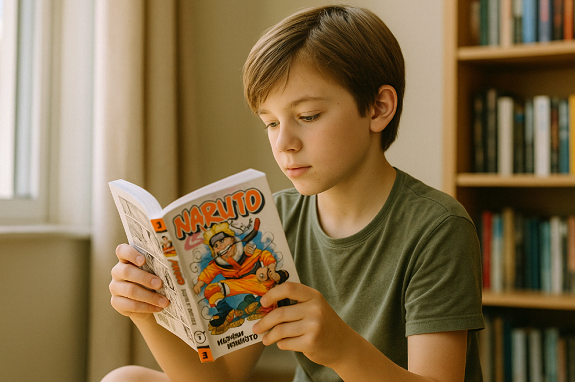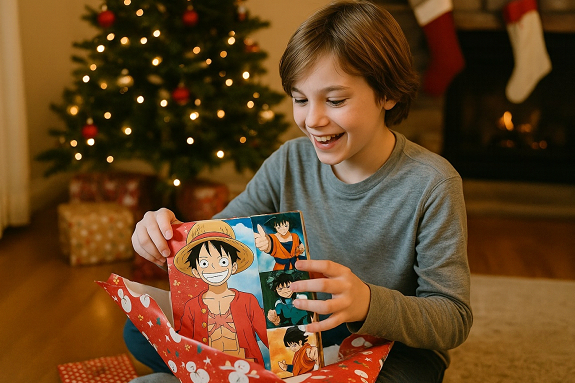From ninja battles to deep emotional arcs, Naruto is one of the most iconic manga series of the last two decades. But for parents and carers, a crucial question often arises: is this story really suitable for children? Whether you’re thinking of introducing your child to the series or simply curious about its content, this article explores the key points from themes and violence to age-appropriateness and emotional maturity to help you make an informed decision.
Understanding the core themes of Naruto
At first glance, Naruto might seem like a simple action-packed story of ninjas and martial arts. But underneath its energetic battles and sharp humour, it weaves in deep emotional threads loneliness, perseverance, revenge, forgiveness, and identity. The main character, Naruto Uzumaki, is an orphan who begins his journey as an outcast in a village that fears him. He dreams of becoming Hokage, the leader of his village, not just for power, but to gain acceptance and respect.
For kids, these emotional themes can be powerful especially those struggling with self-esteem or isolation. However, they also carry complexity that might be lost on younger readers. While Naruto can be inspiring for a mature 10- to 12-year-old, children younger than that might not fully grasp the layered storytelling. There’s also the matter of violence. Though not overly graphic, fight scenes are frequent. They can include blood, emotional trauma, and even character deaths some of which are quite dramatic. Parents should know that the manga doesn’t shy away from heavy moments, even if it’s not gratuitously violent. That said, younger readers who are sensitive to these themes might find certain scenes upsetting. If you’re interested in complementing reading with merchandise, check out Naruto figures which are child-friendly and offer a fun way to connect with the characters outside the manga itself.
What is the recommended age to start reading Naruto?
The official age rating for Naruto manga is generally around 12+, depending on the country. In Australia, the manga is often marked PG or M, which stands for parental guidance and mature themes, respectively. These guidelines suggest that children under 12 may need supervision, depending on their sensitivity and maturity. From a content perspective, Naruto grows more intense as the story progresses. The early volumes are light-hearted and focus on school life and comedic interactions. But as Naruto faces more serious enemies and learns about his painful past, the tone shifts. By the time the Shippuden arc begins, the series explores heavy philosophical and emotional territory war, betrayal, mortality, and identity crisis.
So, is it okay for a child to start reading Naruto at 10 or 11? That depends. If your child is already comfortable with action and complex emotional themes in books or television, then yes with occasional guidance, they’ll likely enjoy it and even learn from it. But for those who are easily frightened or unfamiliar with intense storytelling, it might be better to wait a few more years. Want to explore more safe anime content for kids? You’ll find some curated collections on anime figures australia helpful when you’re trying to strike a balance between fun and age-appropriate content.
How violent is Naruto, really?
One of the most common concerns parents express is whether Naruto is too violent for children. Let’s unpack that honestly. The violence in Naruto is mostly tied to ninja battles and training scenarios. It’s not comparable to horror or gore-centric titles, but it still features some graphic scenes. Characters suffer injuries, experience trauma, and, in some arcs, die. The emotional weight of these events can be substantial, particularly in arcs like the Pain Invasion, the Uchiha backstory, or the Fourth Great Ninja War. Violence in Naruto isn’t just physical; it’s emotional and psychological too. The backstories of characters like Sasuke, Gaara, and Itachi involve loss, betrayal, and moral conflict. These are not always easy to digest, especially for younger readers who may not have the emotional framework to process them.
Physical violence examples
Characters use chakra-powered techniques that can cause significant damage. While it’s stylised and rooted in fantasy, there’s still blood, wounds, and consequences particularly in serious fights.
Emotional and psychological conflict
The deeper challenge lies in the emotional intensity of the series. Loss of family, identity crises, and betrayal arcs could feel overwhelming for children, even if they’re fascinated by the ninja setting. A responsible approach is to preview the manga yourself or read with your child. Consider skipping certain chapters or explaining complex themes in age-appropriate terms. This creates a shared experience and a chance to guide discussions around values and resilience a strength of the Naruto series when used wisely.
What do experts and parents say?
Opinions from parents and educators vary, often based on the individual child’s temperament and experience with media. Some praise Naruto for its strong moral compass and character development, noting that the story promotes perseverance, loyalty, friendship, and forgiveness. However, educators caution that these themes are often wrapped in intense narratives. They recommend using Naruto as a conversation starter rather than handing it to a child without guidance. Here’s what to look for when deciding if your child is ready for Naruto:
⦁ Emotional maturity
⦁ Sensitivity to violence or trauma
⦁ Reading level and comprehension
⦁ Previous exposure to similar content
⦁ Parental involvement
Some parents even use Naruto as part of broader discussions about responsibility, empathy, and overcoming hardship. This manga, when introduced thoughtfully, can be more than entertainment it can be an early lesson in navigating life’s ups and downs.
Alternatives to Naruto for younger readers
If you feel Naruto might be a bit much for your child just yet, that’s completely fine. The manga world is vast and full of age-appropriate alternatives that still offer action, adventure, and meaningful storytelling. Here are a few manga options that capture similar energy without the same level of complexity or violence:
Friendlier alternatives to Naruto
Titles like Pokémon Adventures, My Hero Academia: School Briefs, or Yotsuba&! provide compelling stories that are more suited for younger minds. These titles balance fun, morals, and humour without overwhelming content or dark themes.
Why waiting a bit can be a good thing
Delaying Naruto until your child is ready can make the experience more rewarding. When children are old enough to grasp the emotional undercurrents, they’ll connect with the characters and message on a deeper level making the story even more impactful. And when they’re ready, the ninja world will still be waiting.
Final thoughts on kids reading Naruto
Navigating whether Naruto is right for your child depends on more than just age it’s about emotional readiness, curiosity, and how you, as a parent or carer, choose to guide that experience. With its heartfelt storytelling and rich character development, Naruto can be a powerful read for mature kids. Just be ready to join them on that journey to explain, discuss, and connect.
Read More: Manga merchandise: the surprise hit of this holiday season?




